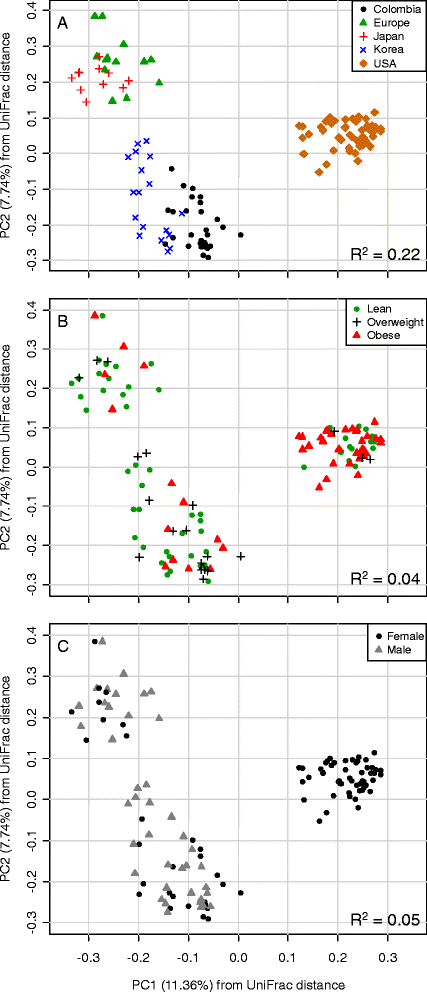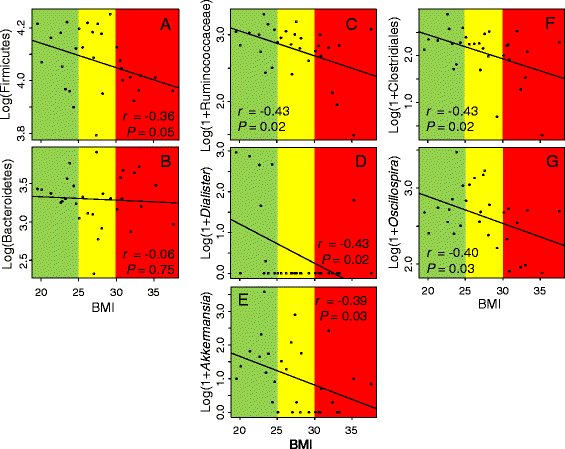The gut microbiota of Colombians differs from that of Americans, Europeans and Asians
- PMID: 25495462
- PMCID: PMC4275940
- DOI: 10.1186/s12866-014-0311-6
The gut microbiota of Colombians differs from that of Americans, Europeans and Asians
Abstract
Background: The composition of the gut microbiota has recently been associated with health and disease, particularly with obesity. Some studies suggested a higher proportion of Firmicutes and a lower proportion of Bacteroidetes in obese compared to lean people; others found discordant patterns. Most studies, however, focused on Americans or Europeans, giving a limited picture of the gut microbiome. To determine the generality of previous observations and expand our knowledge of the human gut microbiota, it is important to replicate studies in overlooked populations. Thus, we describe here, for the first time, the gut microbiota of Colombian adults via the pyrosequencing of the 16S ribosomal DNA (rDNA), comparing it with results obtained in Americans, Europeans, Japanese and South Koreans, and testing the generality of previous observations concerning changes in Firmicutes and Bacteroidetes with increasing body mass index (BMI).
Results: We found that the composition of the gut microbiota of Colombians was significantly different from that of Americans, Europeans and Asians. The geographic origin of the population explained more variance in the composition of this bacterial community than BMI or gender. Concerning changes in Firmicutes and Bacteroidetes with obesity, in Colombians we found a tendency in Firmicutes to diminish with increasing BMI, whereas no change was observed in Bacteroidetes. A similar result was found in Americans. A more detailed inspection of the Colombian dataset revealed that five fiber-degrading bacteria, including Akkermansia, Dialister, Oscillospira, Ruminococcaceae and Clostridiales, became less abundant in obese subjects.
Conclusion: We contributed data from unstudied Colombians that showed that the geographic origin of the studied population had a greater impact on the composition of the gut microbiota than BMI or gender. Any strategy aiming to modulate or control obesity via manipulation of this bacterial community should consider this effect.
Figures



References
-
- Pray L, Pillsbury L, Tomayko E. The Human Microbiome, Diet, and Health: Workshop Summary. Washington, D. C.: National Academy of Sciences; 2012.
Publication types
MeSH terms
Substances
LinkOut - more resources
Full Text Sources
Other Literature Sources
Medical

